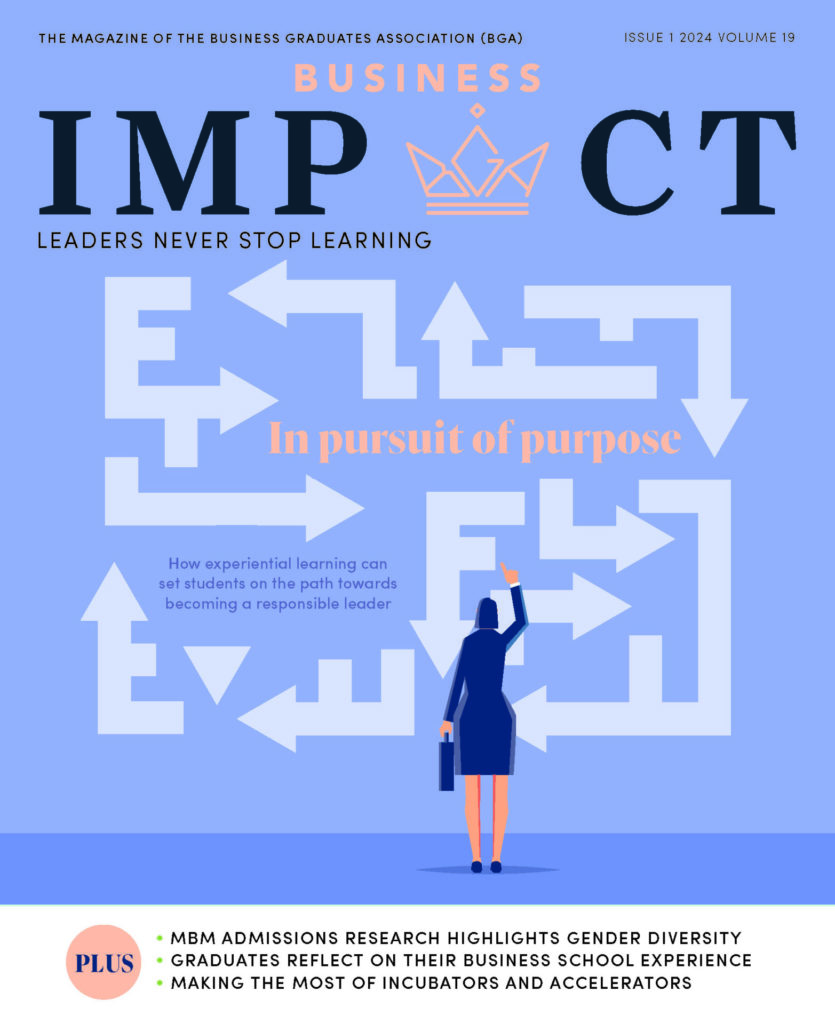Increasing sales and customer loyalty, reducing cost, creating attractive and productive workplaces, and yes – also improving the brand value. These are some of the typical types of business value that we see companies harvest when they seriously engage in sustainability. So, clearly, sustainability should not be seen as a burden to bear but as a potent tool.
While numerous leaders recognise the importance of sustainable practices, they struggle with the ‘how’. In particular, they don’t know how to make efforts in this regard profitable. Many anticipate that the younger workforce will guide and instigate this transformative change. A great way to prepare yourself for that is to adopt a new mindset, as this works across disciplines.
Your mindset influences your perceptions, reactions and the opportunities you recognise. However, there are common misjudgements that prevent firms from adopting the right mindset to excel in sustainability in a way that is good for business and the world. Here are the ‘Fatal Five’ misjudgements, along with an alternative ‘Five to Thrive’ approaches that are covered in more detail below.
Start and end with business
Sustainability isn’t just an environmental or technical specialty. Envisioning it solely as such misses its broader implications. Effective sustainability can, as I said, reduce costs, spike sales, boost loyalty and lure talent – all key areas of managerial attention.
The trick here is to tie the effort directly to an organisation’s top problems and among key clients. Therefore, I recommend starting by identifying the three-to-five-biggest challenges in your company and for your core customers. Let that be the starting point and then use sustainability to find new ways to solve these problems. This way, sustainability efforts immediately gain a solid strategic transformation, greater focus and higher value. It’s about creating business with built-in environmental impact.
Create a positive impact
Traditionally, sustainability focuses on minimising negative impacts and, often, the ultimate goal is achieving net zero. Zero CO2 emissions; zero waste; zero everything. However, businesses thrive on ‘more’ – more profit, growth, products and so on. Hence, sustainability seen as a constraint can feel counterintuitive. Instead, focus on leveraging sustainability to innovate and elevate what you offer.
When sustainability becomes a matter of doing less, avoiding or settling, it resembles the discussions we have during economic downturns, unconsciously triggering our fear of losing things. Furthermore, it is difficult to recruit people to an agenda that involves giving up something and, in general, being ‘a little less bad’.
If you turn it around, it becomes much more interesting. Frame it, think about it and aim to create positive impact. When you use sustainability to strive for a new and better version of what you sell, it opens up creativity and taps into the human drive we have always had to make tomorrow better than yesterday.
Green products are cheaper
How many times have you encountered a ‘green’ product that is more expensive? You probably experience it daily. Just go to the supermarket and compare organic products to conventional ones. It is so widespread that it is considered an unspoken truth.
Whether you believe that a sustainable initiative, in the end, will be more expensive or cheaper, you are most likely right. Yet, there are myriad examples of ‘greener’ products that require fewer materials, less energy and/or provide higher value or value over a longer period. These are just some of the results of smarter resource utilisation. So, there is no basis for the starting point that an environmentally better product must be more expensive.
Does that mean I’m saying that a new and environmentally better solution will always be cheaper? No, it doesn’t. Some things will be more expensive either because they require something more or simply because we pay the price for the materials and their impact, without shifting part of the bill on to our children. Adopt a mindset where sustainable solutions are cost-competitive or even cost-saving from a total cost perspective.
A new way of doing business
Another widespread misconception is that it is too risky to tamper with the core business. However, the reality today is that the reverse is true – it’s too risky if you don’t.
Continuing business as usual and just making minor ‘green’ tweaks is a high-stake gamble. The same goes even if what you’re doing is good and can serve as a flagship project. People will see through it. They will see that you are still part of the problem, even if you have made changes such as altering your packaging, acquiring electric cars for management, or installing solar panels. You expose yourself to a significant risk of being accused of greenwashing.
You need to start developing a new and better version of your core business, regardless of what you deliver to the market. A version that, in some way, contributes to making the world a better place. Sustainability is not a project. It is a different way of thinking, developing and conducting business.
Be open, transparent and collaborative
Many companies shield their sustainability endeavours either out of fear that some will scrutinise them and criticise them for doing too little and pointing out the flaws, or because they fear replication if they are working on something exciting. This is an outdated approach that no longer works. In today’s age, transparency, openness and collaboration are indispensable.
When you are open and transparent, it creates credibility when you communicate. But it also allows those who may have a solution that can accelerate your development to recognise that you have a need and come to you.
Furthermore, by being open and transparent, you can inspire more people and we can all avoid reinventing the wheel all the time. We don’t have time for anything else with all the changes we need to achieve individually in this decade. The complexity and magnitude of the climate crisis, for example, mean that no one can create the right solutions alone. The transition to sustainability is a team sport that requires collaboration.
These five components constitute a progressive mindset that will make it significantly easier for you to spot new opportunities and address the sustainability effort in a company in a way that fosters business value as well as environmental impact. Bringing this mindset with you will increase your value and speed up your access to the top management and strategically important discussions. This is where the fun is, where you learn the most and where you can have the biggest impact.








